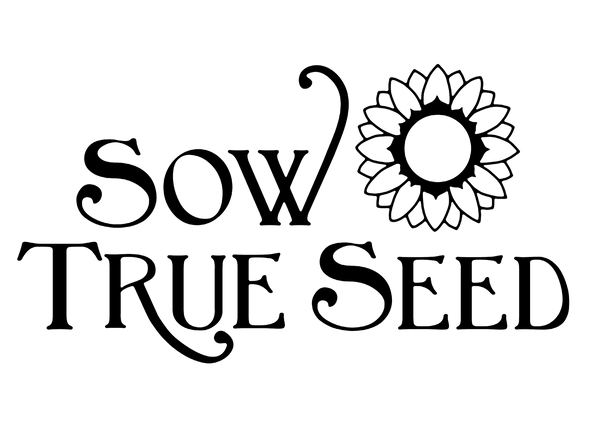Flint Corn Seeds - Yellow Guinea Flint
$12.50
Sold out for 2024
Zea mays
HEIRLOOM. Guinea Flint corn was on the verge of extinction when a few good stewards turned just a handful of its rich orange-colored kernels into a stable supply, and we’re so thankful they did, because it makes the most incredible grits! This prolific, short-season variety originated in Cuba and came to the American Southeast in the early 1500s. From there made its way to Africa where it was further developed to bear up to eight ears per stalk, and the improved strain returned to the US. It was a staple variety for growers in the Southeast, especially coastal South Carolina, through the 1800s, but fell out of favor in the 20th century and was nearly lost. Its traditional uses are hominy, grits, and cornmeal.
These seeds should be direct sown after all danger of frost has passed, in a location with full sun and well drained soil. Ears will mature in about 80 to 100 days. ¼ lb packet contains approximately 640 seeds.
SMALL FARM GROWN by Bender Farms, Norlina, NC
Out of stock
- Planting Information
- How to Grow
- Saving Seeds
| Avg. Seeds/Packet | Packet Weight | Planting Season | Planting Method |
| 640 | 1/4 lb | after last frost | direct seed |
| Seed Depth | Direct Seed Spacing | Soil Temp. Range | Days to Sprout |
| 1" | 3" | 65-85 ℉ | 7-10 |
| Mature Spacing | Sun Requirement | Frost Tolerance | Days to Harvest |
| 8-12" | full sun | frost-sensitive | 80-100 |
Corn should be direct-seeded in the garden after your last frost date. It will germinate best in soil that has warmed to 65 degrees F. Make sure to select a spot in full sun, with well-drained soil. Plant seeds ½” deep, 3” apart in rows 12” apart, and thin the seedlings to 8-10 inches apart in the row once the plants are about 4-6 inches tall. Corn needs to be planted close together in order to ensure proper pollination, so plant in a block rather than a single long row if you’re growing a small garden patch. Grow at least ten plants together - any fewer, and it’s unlikely the ears will get pollinated and produce full cobs. Also be careful of growing different types of corn close to each other - sweet corn pollinated by popcorn or dent corn will not be sweet. If you do want to grow more than one type of corn in your garden, time your plantings about two weeks apart, so that the different varieties tassel at different times - this will help ensure that each variety only pollinates itself.
Sweet corn is usually ready about three weeks after the plants tassel, that is, release pollen from the top of the plant. Keep a close eye on your corn patch as the ears grow - the perfect harvest window for sweet corn is usually just a couple of days. Check the ears for brown silks and feel for filled-out tips (there shouldn’t be much loose husk at the end of the ear). If those signs are present, test for ripeness by peeling back the husk and puncturing a kernel with your fingernail. If the juice that comes out is white, the ear is ready! If it’s clear, it hasn’t quite reached ripeness and won’t be sweet - wait a few more days and check again. If the kernels aren’t juicy at all, you’ve waited a bit too long and the kernels have gone starchy. With a little practice, you’ll be able to harvest your sweet corn at its peak just by look and feel.
Dent, flint, and popcorn ears should be left on the plant until the husks have turned completely brown. Ideally, you can leave them on the plants until they are completely dry, but if you have lots of rainy weather predicted for the late summer and early fall when the corn should be drying, it may be best to bring it indoors to finish drying in a barn or garage. Many people peel the husks back and use them to tie each cob to a laundry line or the like for drying.
Corn (Zea mays) is wind-pollinated, so it can be tricky to prevent cross-pollination. A mile of separation is recommended for crops that are tasseling/silking at the same time with no barriers in between them. If your property is surrounded by windbreaks like trees or tall buildings, such distant separation is probably not necessary. Isolation can also be achieved by timing your plantings so that corn of one variety is finished being pollinated by the time the next variety begins tasseling. Or, if you can’t be sure of isolation any other way, you can place bags over the shoots (developing ears) you want to save, and hand-pollinate them when the silks emerge. Sow True carries corn shoot and tassel bags in our garden supplies section. Corn seeds will only be viable if left on the plant to mature completely. The husks should be completely brown before harvesting corn for seed. Make sure you allow the ears to dry down completely before shelling the kernels off the cobs, and storing the seed in an airtight container in a cool, dark, and dry location.

